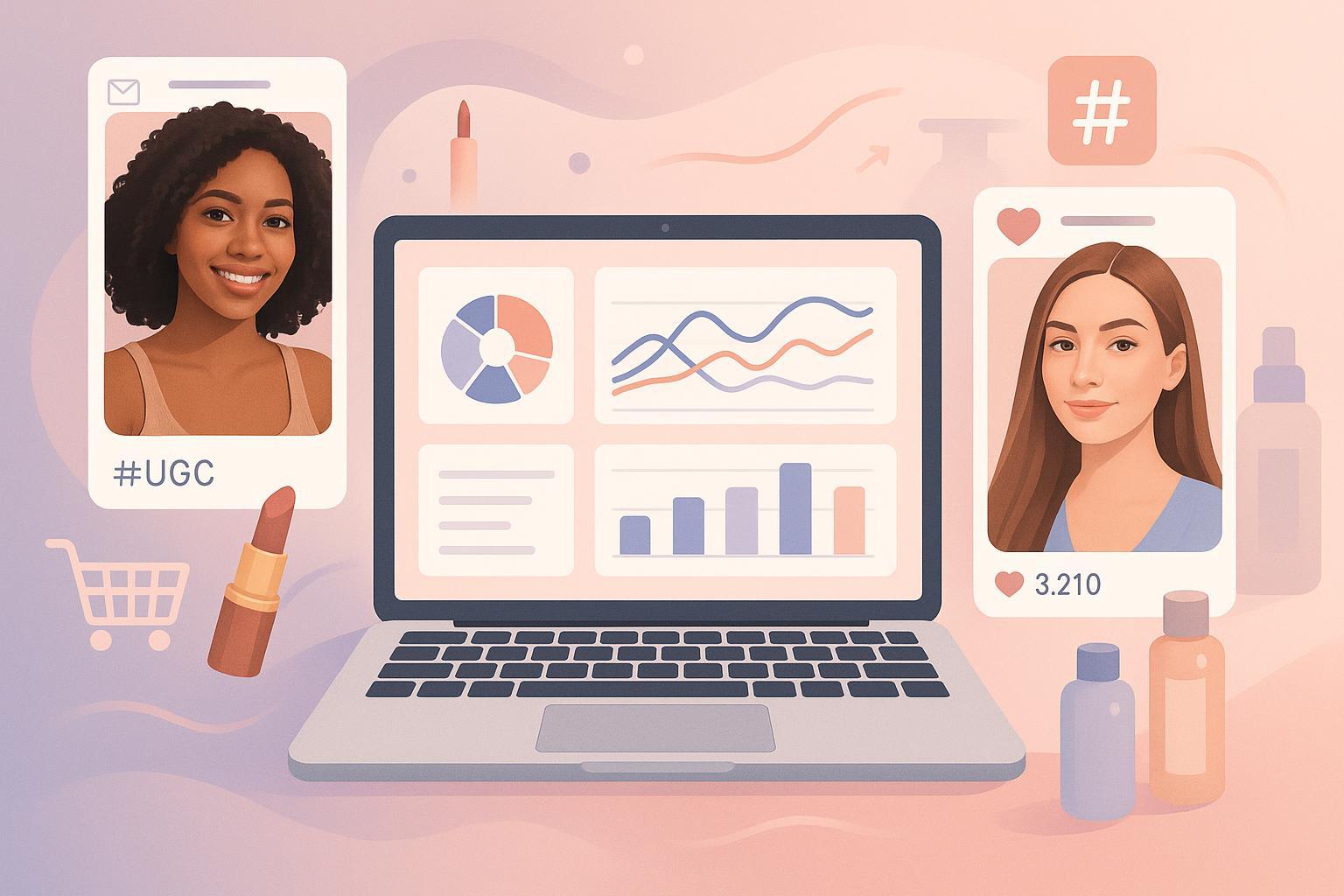Harnessing User-Generated Content in Beauty Content Marketing: Advanced Best Practices & ROI-Proof Analytics (2024)

Introduction: Why UGC is Beauty Marketing’s Secret Growth Engine
User-generated content (UGC) powers modern beauty marketing—driving trust, engagement, and remarkable lifts in conversion rates. According to Nielsen and Statista, over 92% of consumers trust real-user content over standard advertisements, and beauty e-commerce brands see conversion jumps as high as 126% after UGC adoption. Yet, while nearly all marketers recognize UGC’s impact, quantifying its true ROI—especially across fragmented, multi-channel journeys—remains a challenge.
This guide arms advanced beauty marketers with actionable, analytics-driven best practices for sourcing, deploying, and precisely measuring UGC impact. Backed by real-world success stories and expert strategy, you’ll unlock growth and prove results—step-by-step.
Common Attribution Pitfalls: The UGC ROI Blind Spot
Even top beauty brands struggle to attribute revenue to UGC, especially when:
- UGC touches both organic and paid channels (e.g., TikTok awareness → retargeted IG ad → purchase)
- Signal loss occurs (cookie restrictions, iOS/Android privacy updates)
- Attribution tools miss the indirect lift from social engagement, product reviews, or influencer collaborations
Without robust measurement, brands underinvest in high-impact UGC—or misallocate budgets. That’s why actionable best practices and advanced analytics are non-negotiable.
Actionable Best Practices for Harnessing UGC in Beauty Content Marketing
1. Sourcing and Activating High-Impact UGC
- Run targeted campaigns and contests: Use branded hashtags, social challenges, or product seeding to inspire authentic content. Brief participants on your expectations and brand tone (Asendia).
- Leverage direct incentives and recognition: Offer exclusive perks, samples, or influencer partnership opportunities for top creators. Recognize quality contributors in your community with re-posts, features, or loyalty points.
- Systematize submissions: Integrate UGC submission forms on your product/package or website and ensure easy rights management with clear opt-in terms.
- Checklist: Download a UGC Rights & Activation Template
2. Ensuring Authenticity and Quality: Moderation & Rights
- Implement clear moderation guidelines: Outline acceptance criteria (lighting, context, diversity, etc.). Use AI tools (e.g., Tagshop AI, Firework AVA) to triage large volumes and ensure compliance.
- Secure rights and clearances: Always obtain written or clickwrap permission for all uses—especially for paid ads, email, or long-term campaigns.
- Regular quality control audits: Periodically review UGC galleries to maintain brand tone and representation.
- Recommended tools: Pixlee/Emplifi, Tagshop AI, Yotpo
3. Integrating UGC Across Every Touchpoint (Web, Email, Ads & Beyond)
- Product pages: Embed verified customer photos and video reviews alongside traditional content. Case: Tarte Cosmetics doubled product conversion with visual UGC (Pixlee-powered). (Source)
- Shoppable galleries: Curate real-user posts on homepage, PDPs, or campaign landing pages. Iconic London saw a 126% conversion lift post-UGC gallery implementation (Tagshop).
- Paid social & retargeting: Amplify top-performing UGC in Instagram/TikTok/Facebook ads—these generally outperform brand-shot creative by up to 161% (Firework).
- Emails & SMS: Insert real reviews/photos in cart recovery or welcome flows to reinforce social proof.
Best Practice Table: UGC Performance by Channel
| Channel | Avg. Engagement Lift | Conversion Impact | UGC Format |
|---|---|---|---|
| High | Moderate | Images/Short Video | |
| TikTok | Very High | High | Short-Form, Challenges |
| On-site | Moderate | Very High | Galleries/Reviews |
| Paid Ads | High | High | Video/Image |
4. Measuring and Attributing UGC-Driven ROI (With Attribuly)
- Adopt multi-touch attribution: Identify which user journeys include UGC touchpoints—across social, on-site, email, and paid traffic. Server-side analytics, like Attribuly, can overcome cookie loss to paint a unified picture.
- Automate UGC tagging in journeys: Use AI-powered identity resolution and journey mapping to track UGC influence (e.g., first interaction on IG, review read on site, purchase after retargeted ad).
- Segment and analyze by source/campaign: Attribute revenue, ROAS, and AOV lift against specific UGC campaigns or creators for granular ROI proof.
- Showcase: Attribuly for Beauty UGC
- Server-side, privacy-compliant tracking bridges gaps.
- Shopify and ad platform integration unifies journeys.
- Segmentation and dashboards reveal which UGC pieces, creators, and channels truly drive sales—even across multi-touch paths.
- Sample insight: An anonymized DTC skincare client saw a 14% incremental uplift in AOV from UGC-driven cohorts (Attribuly data, 2023).
Further Reading: How Multi-Touch Attribution Brings True UGC ROI
5. Automating UGC Workflows for Scale and Compliance
- Automate moderation and rights management: Use platforms (Tagshop AI, Pixlee, Yotpo, Attribuly) for workflow automation, legal compliance, and pipeline alerts.
- Trigger campaigns by segment/performance: Send hyper-personalized emails or ads when a segment interacts with UGC on key channels—a possible ROI lifter by up to 70% vs. non-UGC triggers (Insense).
- Integrate analytics for continuous feedback: Platforms like Attribuly surface best-performing content so you can double down—and pause unproductive creative in real time.
6. Continuously Optimize and Scale: Data-Driven UGC Growth
- Periodic impact reviews: Use dashboard analytics to review engagement, conversion, and ROAS by UGC type/placement at least monthly.
- Template-driven scaling: Implement and iterate checklists for sourcing, QA, rights, and placement across new channels and international markets.
- Leverage AI for emerging trends: Identify new UGC/creator formats (e.g., shortform video, live streams) gaining traction and quickly integrate with your content supply.
Real-World Results: Leading Beauty Brand Case Studies
- Iconic London: +126% conversions, +11% AOV after rolling out UGC galleries (Tagshop).
- Tarte Cosmetics: Product pages with visual reviews doubled conversion (Pixlee).
- Anonymous Skincare Brand: 50% higher ROAS, 3x ad spend growth, 108% revenue increase with automated UGC campaigns (BrighterClick).
- Hyland’s: 3.4x website conversions tied to authentic UGC video (Firework).
"The beauty e-commerce leaders treat UGC as an owned media channel—measured, optimized, and fully integrated across the funnel. Advanced attribution is key for proving it."
— Attribuly Analytics Team
Feature Comparison: Analytics & UGC Management Tools
| Platform | Multi-Touch Attribution | Shopify Integration | Server-Side Robustness | AI Analytics | Rights Automation | Beauty/DTC Focus |
|---|---|---|---|---|---|---|
| Attribuly | Yes (full, cross-channel) | Yes | Yes | Yes | Yes | High |
| Tagshop AI | Limited | Yes | Partial | Yes | Yes | Medium |
| Pixlee/Emplifi | No | Yes | No | Moderate | Yes | High |
| Yotpo | No | Yes | No | Moderate | Yes | High |
| Bazaarvoice | No | Yes (apps)* | No | Moderate | Yes | Moderate |
*Check each integration for Shopify Plus or app-compatibility details.
UGC Success Checklist for Beauty Marketers
- Define UGC goals/KPIs (conversion, ROAS, social proof, CLV)
- Systematize sourcing (campaigns, incentives, hashtags)
- Organize rights and moderation workflow
- Place UGC strategically across touchpoints
- Deploy multi-touch attribution (recommend: Attribuly)
- Review impact data monthly; iterate placements/content
- Scale with templates and automation
Download: Advanced UGC Attribution Checklist
Conclusion & Next Steps
UGC is no longer just a trust signal—it’s a measurable revenue growth engine for beauty e-commerce. By following these advanced best practices and embracing unified attribution with platforms like Attribuly, marketers can:
- Prove and grow UGC-driven sales
- Optimize spend for highest-return channels
- Build sustainable, authentic content pipelines
Ready to turn UGC into your top-performing channel? Book a demo with Attribuly or access our exclusive beauty UGC analytics report.
Further Reading: Mastering E-commerce Attribution for Beauty Brands
References:
- Nielsen, The Power of Authenticity
- Tagshop AI Blog
- Firework Blog
- Tarte Cosmetics x Pixlee
- Attribuly UGC Resources
